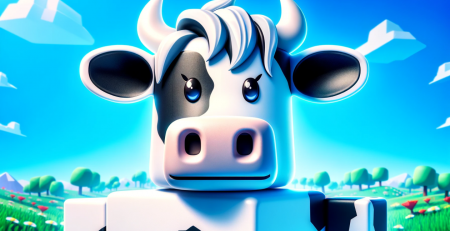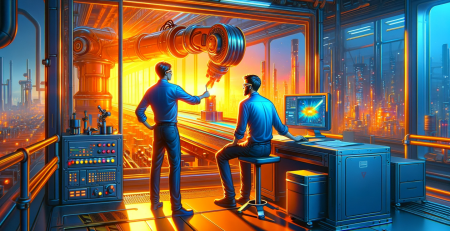Is AI Content Generation a Race to the Top or the Bottom?
The rapid advance of Artificial intelligence (AI) technology has brought about a content generation revolution. With the click of a button, AI models can now produce articles, stories, and other forms of content at an astonishing rate. However, as AI-generated content becomes increasingly ubiquitous, it raises an important question: Is this a race to the top, where AI propels us toward greater efficiency and innovation, or a race to the bottom, where we become inundated with generic and repetitive content?
The Ubiquitous Plastic of the Web
Just as plastic is a pervasive material in our physical world, AI-generated content may quickly become the ubiquitous “plastic” of our digital world. The ease with which AI tools enable the creation of content might result in an explosion of articles, blogs, and social media updates, frequently produced without much consideration for their quality or uniqueness. This flood of content could contribute to a scenario of information pollution, in which meaningful insights and innovative ideas are lost under an avalanche of mundane, generic and low-quality material.
Envision a newsfeed brimming with monotonous, repetitive product descriptions or blog posts that nothing more than reword what’s already out there. This excess of content triggers worries about information pollution, where significant insights and creative thoughts become buried beneath a deluge of generic and low-quality material.
The Echo Chamber of AI-on-AI Training
A significant concern with AI content generation is the danger of forming an echo chamber effect, where AI models are trained on data produced by previous AI models, leading to a cycle of AI-driven training. This cycle could diminish the originality and variety of the content created. As AI models imitate and regenerate the outputs of one another, there’s a risk they might perpetuate existing biases, reinforce stereotypes, and limit creative expression.
To explore this further, let’s examine the concept of overfitting in machine learning. Overfitting happens when a model overly familiarizes itself with its training data, absorbing not just the essential patterns but also the noise and anomalies. An overfitted model performs well with its training data but poorly with new, unseen data because it struggles to generalize.
Consider a scenario where the training data for a generative AI model is itself produced by AI. If the AI generating this data was overfitted, its output would include similar patterns, noise, and anomalies. A new AI model trained on this data would likely learn these same imperfections, leading to its overfitting and, consequently, a lack of diversity in its outputs.
Furthermore, if the AI producing the training data had any inherent biases, the new AI model would inherit and possibly amplify these biases, resulting in biased outcomes. This issue is a significant concern for AI ethics and fairness.
Hence, ensuring that generative AI models are trained on diverse and unbiased data is crucial. Human oversight is essential in maintaining the quality and diversity of the training data and in identifying and correcting biases in AI-generated content.
Beyond Efficiency: The Human Factor in Content
While AI excels at generating content rapidly and efficiently, it is important to recognize the value of human creativity and critical thinking in the content creation process. Human writers bring a depth of understanding, emotional intelligence, and cultural context that AI models struggle to replicate. Furthermore, human oversight and editing are crucial for quality control, ensuring content is accurate, engaging, and aligned with the intended message.
A skilled writer can craft compelling narratives, inject humour or pathos, and tailor content to resonate with specific audiences. Furthermore, human oversight and editing are crucial for quality control, ensuring the content is accurate, engaging, and aligned with the intended message.
A Symbiotic Future: Humans and AI Together
Rather than pitting AI against human creators, the future of content creation lies in a symbiotic relationship between the two. AI can be a powerful tool to augment and complement human creativity, providing efficiency and technical capabilities that enhance content creation. For instance, AI can assist with research, data analysis, and even generating initial drafts or outlines, freeing human creators to focus on refining, polishing, and injecting their unique perspectives into the content.
At the same time, human expertise remains essential for ensuring the quality, originality, and value of the content produced. Human editors and curators can shape AI-generated content, imbuing it with nuance, cultural sensitivity, and a distinct voice that resonates with audiences.
Conclusion
As AI-driven content creation gains momentum, finding a balance between AI’s efficiency and innovation and the necessity for human expertise and oversight becomes essential. Rather than allowing AI to dominate the content landscape with bland, generic and repetitive outputs, instead we must leverage its capabilities to enhance human creativity and critical thinking.
By cultivating a cooperative relationship between humans and AI, we can envision a future where content is not only informative and original but also captivating. AI has the potential to augment human creativity, while human creators ensure that the content produced is rich in depth, authenticity, and cultural relevance.
Ultimately, the future of content creation lies not in a race to the top or the bottom but in a harmonious collaboration between humans and AI, where the best of both worlds converge to produce truly meaningful and impactful content.
Check Out My Other Articles At: 10 Emerging Careers in the Age of AI and One Massive New Role – Kieran Gilmurray










Comment (1)
Kieran, This is an incredibly insightful article. You are the AI whisperer!!
John